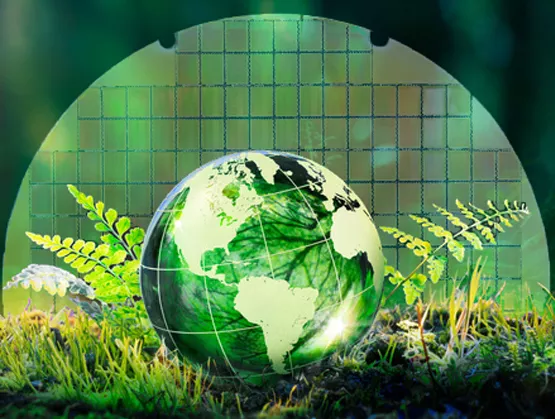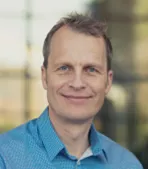
Semiconductor technology is essential for enabling a sustainable future, but it also poses significant environmental challenges, such as high emissions, water use, resource depletion, and e-waste.
Electronics industry experts and researchers will offer insights into strategies for making the semiconductor business more environmentally friendly at imec ITF towards NETZERO at SEMICON Europa 2023, November 14-17 in Munich, Germany. SEMI spoke with Lars-Ake Ragnarsson, Program Director Sustainable Technologies and Systems (SSTS) at imec, about the semiconductor industry's challenges to reduce it environmental impact and how industry leaders can collaborate to get to the net zero.
Ragnarsson shared his views on sustainability ahead of his talk on November 14, 2023. Join us at the event to meet experts from imec and other key industry influencers. Registration is open.
SEMI: In your talk you will present imec’s Sustainable Semiconductor Technologies and Systems (SSTS) program. Why was this program established?
Ragnarsson: In 2021 imec launched the Sustainable Semiconductor Technologies and Systems (SSTS) program to help the Integrated Circuit (IC) manufacturing value chain reach its environmental sustainability targets. The program is structured around three pillars:
- Assess
- Improve
- Disrupt
At the heart of the assess pillar lies our in-house developed software platform imec.netzero. This platform functions as a virtual fab and provides a quantified bottom-up view of IC manufacturing for current and future logic and memory technologies. Imec.netzero estimates energy consumption, water and mineral usage, and greenhouse gas emissions associated with the different processes involved in chip fabrication to determine high-impact processes.
 The improve pillar, consists of collaborative projects conducted in our partners’ facilities or in our own 300mm fab as a pilot environment. Here, we explore solutions to minimize high-impact processes.
The improve pillar, consists of collaborative projects conducted in our partners’ facilities or in our own 300mm fab as a pilot environment. Here, we explore solutions to minimize high-impact processes.
The long-term aim – pursued in the disrupt pillar – is to develop an environmental impact toolbox with E-metrics and protocols. This will ultimately enable green technology pathfinding through Power-Performance-Area-Cost-Environment (PPAC-E) analysis of new IC technologies.
SEMI: What makes sustainability so challenging for the semiconductor and electronics industry? What are the main challenges posed by fab processes?
Ragnarsson: To enable true sustainable development, the environmental impact needs to be taken into account in the very early stages of technology pathfinding by adding Environment to Power-Performance-Area-Cost-Environment (PPAC). Solving the PPAC-E trade-off for new technologies is not only complex, but also requires a new mindset.
It took the semiconductor industry years to find the right materials, refine the process modules and identify steps that have contributed to the progress of the industry. Furthermore, the development of new advanced technologies is a highly complex and expensive endeavour. So, including environmental considerations may not compromise other parameters (PPAC) and the performance of the existing tools and processes, nor the devices.
The industry is also facing challenges due to its very rapid growth. We need to decrease emissions per fabricated wafer, but also the total emissions. This means that we need to work even harder to compensate for the growth in wafer volume.
SEMI: Imec is one of the main leaders in sustainability innovation. How important is it for imec to collaborate with other industry leaders?
Ragnarsson: The SSTS’s program success hinges on the active involvement of players from across the entire IC value chain. We are very pleased to collaborate with several renowned system and fabless companies, equipment, infrastructure and material suppliers, integrated device manufacturers (IDMs) and foundries.
Member partners include: Google, Amazon, Apple, Meta, Microsoft, GlobalFoundries, TSMC, Samsung, Rapidus, Applied Materials, ASML, Edwards, Kurita, SCREEN, and Tokyo Electron.
SEMI: What are the main outcomes and benefits of this collaboration?
Ragnarsson: We expect IDMs and foundries to help us benchmark the numbers. We build models from the bottom-up, based on data collected from different sources, including the imec’s fab. Foundries possess the top-down view, bring our models closer to reality and help us further refine and optimize our imec.netzero tool.
To reduce the environmental effects of chip manufacturing, we must understand how extensive the impact is, what part of the manufacturing process has the largest impact, how the impact will evolve towards the future, and what levers we have to reduce it. In reality, life cycle inventory databases available today lack the range of data of advanced technologies needed to complete such an analysis. Moreover, most companies today take a top-down view, looking at the yearly production of their fab, and how much electricity, water, and other resources have been consumed.
Unlike other models, our approach achieves a higher granularity, providing actionable data down to the process step and processing tool level. Moreover, by joining our program, partners gain access to a unique ecosystem. They participate in roundtable discussions on relevant sustainability topics, for example, how to set their own sustainability roadmap. Finally, how to make a change!
SEMI: How can we inspire other industry leaders to join the path towards net zero?
Ragnarsson: I started working on sustainability very recently and I realized that my daily activities, as an advanced technology and research professional, were deviating more and more from my personal values, especially considering and reflecting on how a lack of sustainability driven actions was impacting the world.
I looked for inspiration and I found many articles, papers, and podcasts focusing on sustainability topics. I was inspired by one podcast that mentioned Venn diagrams and explained how to match my strengths with my wishes to find ways to make a change.
In my journey, I was lucky enough to meet others like me at imec. Together, we started to work on the assessment of manufacturing impact which later led to the launch of the SSTS program. This was personally and professionally extremely gratifying and I encourage everyone to reevaluate ourselves in this same way and try to find the best way to contribute.
The need to contribute in the sustainability area will lead to a need for specific professional profiles in our industry. Apart from having a mindset to work towards a more sustainable future, there is a need for more experts with knowledge in life cycle assessment combined with a strong process, integration and/or fab understanding.
SEMI: What do you expect from your participation at SEMICON Europa 2023?
Ragnarsson: I look forward to listen and learn from other experts and leaders and I hope to get further inspiration. I trust I will meet with many people which are interested in making a change and hear their view on how this can be done, or why it is maybe very challenging. Collectively, we can find the path towards net zero.
About Lars Åke Ragnarsson
 Lars Åke Ragnarsson is Program Director Sustainable Technologies and Systems (SSTS) at imec. He holds a M.S. degree and a Ph.D in electrical engineering from Chalmers University of Technology in Göteborg, Sweden. His postdoctoral studies with the IBM T.J. Watson Research Center in Yorktown Heights, New York, focused on the electrical characterization of high-k dielectrics. Lars-Åke joined imec in 2002 and is a scientific director in compute and memory technologies with a strong focus sustainability.
Lars Åke Ragnarsson is Program Director Sustainable Technologies and Systems (SSTS) at imec. He holds a M.S. degree and a Ph.D in electrical engineering from Chalmers University of Technology in Göteborg, Sweden. His postdoctoral studies with the IBM T.J. Watson Research Center in Yorktown Heights, New York, focused on the electrical characterization of high-k dielectrics. Lars-Åke joined imec in 2002 and is a scientific director in compute and memory technologies with a strong focus sustainability.
Serena Brischetto is Director of Marketing and Digital Engagement at SEMI Europe.